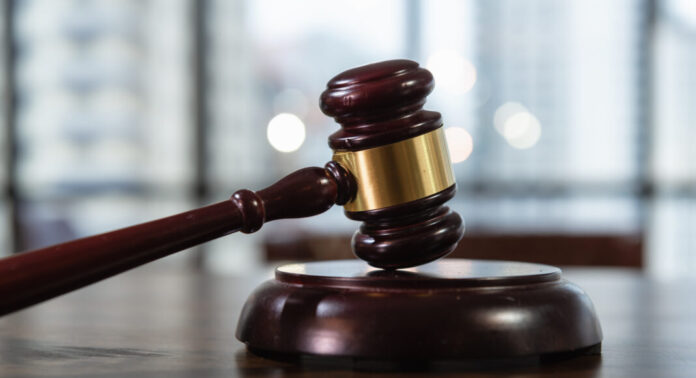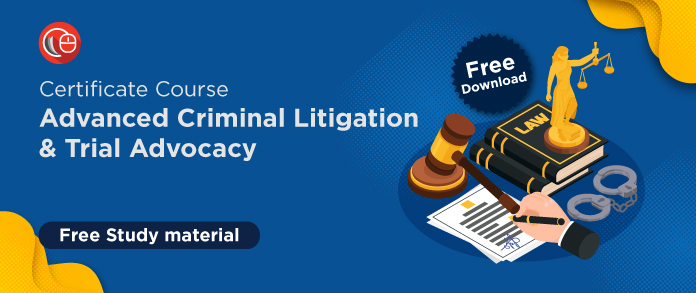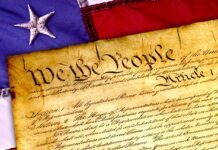This article has been written by Anindita Deb, a student from Symbiosis Law School, NOIDA. In this article, the author explains the exclusionary principle in the US legal system, which is used to suppress evidence obtained unlawfully, along with the exceptions to the principle.
It has been published by Rachit Garg.
Introduction
The US has a long history of protecting the rights of its citizens. One of the most important of these rights is the exclusionary rule. The exclusionary rule is an American legal principle that forbids the use of evidence obtained unlawfully in criminal proceedings. The Fourth Amendment to the United States Constitution, which safeguards people against unreasonable searches and seizures, serves as the foundation for this principle. In the landmark case of Weeks v. United States in 1914, the Supreme Court established the exclusionary principle. The Court decided that the evidence, in this case, was not admissible in a federal court because it was obtained unlawfully through a warrantless search and seizure. The Court then extended the exclusionary principle to apply to state courts in Mapp v. Ohio in 1961. But what is the exclusionary rule, and how does it work? In this article, we’ll explore the history and purpose of the exclusionary rule and its exceptions, as well as the impact they have had on US laws and court cases.
What is the Exclusionary Principle
The exclusionary principle is a legal doctrine that prohibits the use of evidence obtained in violation of a person’s constitutional rights. It is based on the idea that the state should not be allowed to benefit from its own illegal actions. As such, any evidence obtained through unconstitutional searches and seizures is not admissible in court. This principle is rooted in the Fourth Amendment of the US Constitution, which protects citizens from unreasonable searches and seizures.
The exclusionary principle is intended to prevent law enforcement officers from acting illegally and to safeguard people’s constitutional rights. Evidence that was gathered in violation of the Fourth Amendment, such as through an unauthorized search or seizure, cannot be used in court. This can make it more challenging for the prosecution to secure a conviction by restricting them from providing the jury with the evidence they need to prove the guilt of the accused. The majority of states have their own exclusionary remedies for evidence that was obtained illegally, in conformity with their state constitutions and/or statutes. This rule is sometimes referred to as a legal technicality since it provides defendants with a defense that does not address whether the crime was actually committed. In this respect, it is similar to the Fifth Amendment’s explicit restriction on double jeopardy. All evidence whose retrieval was prompted by criminal activity may, in extreme cases, be omitted from a jury. This is true when law enforcement or the prosecution uses unlawful conduct to obtain incriminating evidence.
The exclusionary principle applies to all levels of the criminal justice system, including police, prosecutors, judges, and juries. It applies to everyone residing in the United States, regardless of whether they are citizens, immigrants (legal or illegal), or visitors. It is an important tool for ensuring that persons charged with a crime are not unfairly prejudiced by evidence collected in violation of their rights.
A brief history of the Rule
The Supreme Court declared in Boyd v. United States in 1886 that the government could not force a defendant to submit damning evidence, which served as the first instance of the exclusionary rule. The exclusionary rule, however, as we know it now, did not become firmly established until the 1960s.
Evidence seized illegally was not admissible in state courts, as the Supreme Court concluded in Mapp v. Ohio in 1961. States that had previously been permitted to introduce illegally obtained evidence in court were now subject to the exclusionary rule thanks to this ruling.
The exclusionary rule has been improved upon, and a number of exceptions to the rule have been established by the Supreme Court in later cases. For instance, evidence obtained during a search that was done “in good faith” or due to an oversight that wasn’t the fault of the police may be used as evidence in court.
Despite these exceptions, the exclusionary rule continues to be a crucial safeguard for citizens against unreasonable searches and seizures. It helps ensure that citizens’ rights are upheld and maintained while acting as a disincentive to police misconduct.
Exceptions to the Rule
Despite its many benefits, the exclusionary rule has been criticized for its potential to allow guilty defendants to go free. If illegally obtained evidence is excluded from trial, it may be more difficult to secure a conviction, even in cases where the defendant is clearly guilty. This can be frustrating for victims of crime, who may feel that justice has not been served.
Hence, it is essential to ensure that a principle like this is not put into practice in a rigid and absolute manner. Thus, over the years, a number of exceptions to the exclusionary rule have been formulated by US Courts. These exceptions allow for the use of evidence obtained in violation of a person’s constitutional rights if certain conditions are met. The most common exceptions are the Good Faith Exception, the Purged Taint Exception, the Independent Source Exception, the Inevitable Discovery Exception, the Impeachment of the Defendant Exception, and the Non-Criminal Trial Proceedings Exception.
Good Faith Exception
The Good Faith Exception is an exception to the Exclusionary Principle that allows for the use of evidence obtained in violation of a person’s constitutional rights if the search or seizure was conducted in good faith. This exception allows for the use of evidence obtained in violation of a person’s rights as long as the police officers conducting the search or seizure were acting in good faith and reasonably believed that their actions were in accordance with the law. This exception is often used in cases where police officers were unaware that their actions were in violation of the law.
The United States Supreme Court first acknowledged the good faith exception in the case of United States v. Leon (1984). In that case, the Supreme Court ruled that as long as the police officers’ reliance on the search warrant was done in good faith, the evidence they gathered in “objectively reasonable reliance” on the order could still be introduced in court. Additionally, the U.S. Supreme Court declared in Davis v. U.S. (2011) that the exclusionary rule is not enforceable when a search is carried out by the police in reliance on binding appellate precedent that authorizes the search. According to the Supreme Court in Illinois v. Krull (1987), if the officers rely on an act that is later declared unlawful, the evidence may still be accepted. In Herring v. U.S. (2009), the US Supreme Court determined that when police officers made mistakes in keeping records in a warrant database, the good-faith exception to the exclusionary rule still holds true.
When the police rely on a warrant they think is legitimate but which is later discovered to be invalid, they are assumed to have done so in good faith. This might happen, for instance, if the warrant was improperly executed or if it was issued based on information that was later discovered to be unreliable. If the police reasonably believed the warrant was valid at the time they conducted the search, the evidence they obtained may be admissible in court.
However, the good faith exception does not apply if the warrant was so deficient that no reasonable officer could have believed it to be valid. For example, if the warrant was based on false information or if it was issued without probable cause, the good faith exception would not apply.
The good faith exception is not an unlimited exception to the exclusionary rule. It only applies to evidence obtained in good faith in reliance on a warrant that is later found to be invalid. Evidence obtained through an illegal search or seizure that was not authorized by a warrant or that is not covered by one of the recognized exceptions to the warrant requirement will still be excluded from court.
Purged Taint
The “purged taint exception” to the exclusionary rule is a legal principle that allows evidence that was previously obtained unlawfully to be introduced in court, provided that the connection between the evidence’s illegal collection and the initial illegality has been “purged” or attenuated. This exception is hence also termed the “attenuation doctrine”.
In the 1939 case of Nardone v. the United States, the U.S. Supreme Court introduced the “purged taint” exception. In this case, the Court decided that if the link between the illegal wiretap and the evidence was sufficiently attenuated, evidence gathered through wiretapping, which was unlawful at the time, might still be allowed to be used in court.
When the prosecution can demonstrate that the evidence they gathered was not directly linked to the initial illegal behavior or that the connection has been broken by intervening circumstances, the purged taint exception applies. For instance, if the police conduct an unauthorized search of a suspect’s house and discover evidence of a crime but subsequently acquire a legitimate search warrant as a result of new information, the evidence discovered during the latter search may be admitted into evidence in court.
To ascertain whether the purged taint exception applies, the Supreme Court established a number of factors to be considered. These factors include, as established in the case of Brown v. Illinois (1975), the proximity in time between the first illegality and the finding of the evidence, the existence of intervening events, and the nature and extent of unlawful police actions.
The purged taint exception, however, does not automatically override the exclusionary rule. It is the burden of the prosecution to prove that there is no longer a connection between the original illegality and the evidence. The exclusionary rule still applies if the connection is too strong or if the prosecution is unable to show that the connection has been attenuated.
In conclusion, the “purged taint” exception to the exclusionary rule permits evidence collected by unlawful means to be admitted in court, provided that the connection between the initial wrongdoing and the evidence has been sufficiently attenuated. This exception must be proven by the prosecution that the connection has been severed by subsequent events. It is applied on a case-by-case basis.
Independent Source
The Independent Source exception is an exception to the Exclusionary Principle that allows for the use of evidence obtained in violation of a person’s constitutional rights if it can be shown that the evidence was obtained independently of the unconstitutional searches or seizures. This exception is often used in cases where the police officers obtained evidence without violating the person’s rights but then tainted the evidence by using it to find further evidence obtained in violation of the person’s rights. The Independent Source exception allows for the use of this tainted evidence as long as it can be shown that the tainted evidence was obtained independently of the unconstitutional searches or seizures.
Thus, according to this principle, the exclusionary rule does not apply to the evidence gathered in accordance with a warrant if the police had sought and obtained any evidence without knowing the information gathered from the illegal search.
In order to use the independent source doctrine, a court must determine that:
- The police would have sought the warrant even if they hadn’t learned the information from the illegal search, and
- Even after the illegally acquired information has been removed from the search warrant affidavit, probable cause would still support the issuance of a warrant.
In Nix v. Williams (1984), the US Supreme Court provided the following rationale for the independent source doctrine: “The interest of society in deterring unlawful police conduct and the public interest in having juries receive all probative evidence of a crime are properly balanced by putting the police in the same, not a worse, position that they would have been in if no police error or misconduct had occurred…When the challenged evidence has an independent source, the exclusion of such evidence would put the police in a worse position than they would have been absent any error or violation.” This reasoning was also adopted in the case of Murray v. United States (1988), which provides the modern interpretation of the exception to the exclusionary rule. Additionally, some courts use an “expanded” approach, according to which a warrant that is only partially tainted is upheld if the information that remains untainted after the tainted information that led to its issue shows probable cause adequate to justify its issuance.
In the case of United States v. Duran-Orozco (1999), agents tracked alleged drug dealers to a residence, where they peeked through a window and found marijuana. The agent described the facts that made him think a search of the home might bring up signs of drug smuggling, including the presence of marijuana, in the affidavit for the search warrant. The Ninth Circuit Court of Appeals ruled that the agents’ peek through the window constituted an illegal search. Nevertheless, it was decided that the affidavit would have been sufficient to support a search warrant even in the absence of the information obtained from the illegal search. The case was remanded to the district court so that it may make a factual finding about whether the agents would have actually sought a warrant if they hadn’t seen the marijuana.
Inevitable Discovery
The Inevitable Discovery principle is another exception to the Exclusionary Principle that permits the use of evidence obtained in violation of a person’s constitutional rights if it can be shown that the evidence would have been discovered even without the unconstitutional search or seizure. This exception is often used in cases where the evidence obtained in violation of the person’s rights would have been discovered through other means, such as a valid search warrant or a search conducted with the person’s consent.
The prosecution must prove two elements in order to establish the inevitable discovery exception:
- They must first demonstrate that the evidence’s discovery was inevitable. This indicates that the evidence would have been discovered even if the search or seizure had been lawful.
- The prosecution must also show that, even without the illegal search or seizure, the authorities would have found the evidence via legitimate means.
The inevitable discovery exception, for instance, might apply if the police illegally search a suspect’s home and discover incriminating evidence if they have proof that they would have obtained a search warrant for the residence based on other evidence and that the evidence would have been found during the lawful search.
There is often an overlap between the exceptions of independent sources and inevitable discovery; however, the two are distinct. The following section will discuss how the two exceptions are different from one another.
Difference between independent source exception and inevitable discovery exception
The independent source doctrine is applicable when the evidence was actually obtained independently from activities unaffected by the initial illegality, as opposed to the inevitable discovery theory, which is applicable when it would have been discovered regardless of the illegal search. Application of the inevitable discovery principle to warrantless searches would eliminate the need for a warrant, whereas application of the independent source doctrine typically discourages officers from going beyond their authority because it adds a substantially higher burden of convincing a trial court that no information obtained from the search was obtained in violation of the law.
Impeachment of the Defendant
The Impeachment of the Defendant exception is a crucial exception to the Exclusionary Principle that allows for the use of evidence obtained in violation of a person’s constitutional rights if it can be used to impeach the defendant. This exception is often used in cases where the evidence obtained in violation of the person’s rights is relevant to the case and can be used to impeach the defendant’s credibility.
This exception permits the admission of evidence that would ordinarily be prohibited by the exclusionary rule if it is utilized solely to cast doubt on the validity of the defendant’s testimony. This exception derives from the provision of the freedom to cross-examine as per the Sixth Amendment to the US Constitution. In Harris v. New York (1971), the Supreme Court acknowledged this exception as a tool for truth testing to prevent perjury. However, even in cases where the government suspects perjury, it is only allowed to use tainted evidence for impeachment and not to establish guilt.
For the prosecution to be able to rely on this exception, they must be able to prove that the evidence is relevant to the defendant’s credibility and that its probative value overcomes its prejudicial impact. In other words, the court must decide if the evidence must be presented to cast suspicion on the defendant’s credibility and whether the importance of the evidence to the trial’s purpose of finding the truth outweighs any possible harm to the defendant’s case. For instance, the prosecution may attempt to introduce evidence of earlier drug use that was illegally obtained by law enforcement if a defendant on trial for drug possession testifies that they never used drugs. This is done to undermine the credibility of the defendant.
It is important to point out the fact that this exception only applies to evidence that is used to impeach a person and not as concrete proof of guilt. In addition, the evidence must not have come from the defendant’s own activities but rather through unlawful means gathered by law enforcement.
Non-Criminal Trial Proceedings (civil tax hearings, quasi-criminal proceedings, deportation hearings, probation revocation hearings)
The “Non-Criminal Trial Proceedings” exception is an exception to the Exclusionary Principle that does not bar the use of evidence obtained in violation of a person’s constitutional rights in certain non-criminal proceedings. This exception is often used in cases involving civil tax hearings, quasi-criminal proceedings, deportation hearings, and probation revocation hearings.
In the case of INS v. Lopez Mendoza (1984), the Supreme Court held that deportation hearings are civil proceedings, the defendant cannot suppress his or her identity even if subject to an unlawful arrest, and the exclusionary rule does not apply to deportation hearings.
Exclusionary Rule and Fifth Amendment
The Exclusionary Rule also applies to the Fifth Amendment, which protects individuals from self-incrimination. Under the Exclusionary Rule, any evidence obtained in violation of a person’s Fifth Amendment rights is not admissible in court.
Individuals in criminal proceedings have many safeguards under the Fifth Amendment. The right against self-incrimination, which enables people to choose not to give answers that might implicate them, is one of the most important protections. The Fifth Amendment also mandates that people receive Miranda warnings, which are declarations that inform them of their right to stay quiet and their right to an attorney.
Despite being separate legal concepts, the exclusionary rule and the Fifth Amendment can intersect. For example, the exclusionary rule may allow for the exclusion of evidence from a trial if the concerned law enforcement agency obtained the evidence through a coerced confession in violation of the defendant’s Fifth Amendment rights.
Thus, this exclusionary rule may also be helpful in preserving the defendant’s Fifth Amendment rights by prohibiting the use of evidence obtained unlawfully, such as through a coerced confession, as evidence in court. This can be helpful in stopping prosecutors from forcing a person to implicate oneself through means that are unconstitutional.
Exclusionary Rule and Sixth Amendment
The Exclusionary Rule also applies to the Sixth Amendment, which guarantees the right to a fair trial. Under the Exclusionary Rule, any evidence obtained in violation of a person’s Sixth Amendment rights is not admissible in court. This means that evidence obtained by withholding information from the defense or by denying the defendant a fair trial is inadmissible in court.
The defendant’s Sixth Amendment right to confront witnesses may be jeopardized if law enforcement obtains evidence through an unauthorized search and seizure that infringes on the defendant’s Fourth Amendment rights and the evidence is used against the defendant at trial. The defendant’s Sixth Amendment right to cross-examine witnesses may be better preserved if the evidence is excluded in accordance with the exclusionary rule.
Additionally, any evidence gathered as a result of a defendant’s Sixth Amendment right to counsel may be excluded under the exclusionary rule. For instance, words made by a defendant during an interrogation conducted by the police may be removed from evidence if the defendant’s attorney is unable to be present during such an interrogation.
Landmark Case: Groh v. Ramirez, 540 U.S. 551 (2004)
In Groh v. Ramirez (2004), the US Supreme Court addressed the Fourth Amendment’s requirement that search warrants clearly state the place that needs to be searched and the individuals or items that need to be taken.
Facts of the case
Lesli Groh, the petitioner in the case, was a federal agent who secured a search warrant to examine the respondent’s residence for illegal weapons. The precise description of the firearms that the agents believed to be in the home was included in the warrant application, but no exact description of the house itself was provided.
The agents got a second warrant that contained a detailed description of the house after realizing that the original one was incomplete during the search. Mario Ramirez, the respondent, filed a lawsuit against Groh, claiming that the initial warrant was invalid because it did not specifically describe the location to be searched. Groh took the defense that the police officials are entitled to qualified immunity under the good faith exception to the exclusionary rule, and hence, the evidence may not be prohibited by the court.
Issues involved in the case
The following issues came up in this case:
- Whether the incomplete search warrant that initially did not describe the location that was to be searched may be held violative of the Fourth Amendment?
- Whether the federal agent was entitled to qualified immunity, given that a magistrate determined probable cause to conduct the search based on an affidavit that clearly described the items in question?
Final Judgment and Observations of the Court
The Supreme Court decided in Ramirez’s favor, holding that the warrant was constitutionally defective because it did not adhere to the Fourth Amendment’s particularity requirement. The “good faith” exception to the exclusionary rule, which permits evidence collected through a warrant that is later proven to be defective to be accepted at trial if the officers acted in good faith in relying on the order, was not used by the government, according to the Court.
The Court stated that where a warrant is “so facially deficient” that it does not satisfy the Fourth Amendment’s particularity requirement, the “good faith” exception does not apply. The initial warrant, according to the court, was so inadequate that it did not give the agents the required guidance to carry out an authorized search.
The Groh v. Ramirez ruling upheld the Fourth Amendment’s mandate that search warrants must specifically identify the place to be searched and the people or things to be seized. The ruling also made it clear that where a warrant is so obviously flawed that it violates the Fourth Amendment’s standards, the “good faith” exception to the exclusionary rule does not apply.
Recent cases
In recent years, the Exclusionary Rule has also been tested in cases such as Corley v. United States (2009) and Herring v. US (2011). In these cases, the US Supreme Court ruled that evidence obtained in violation of a person’s Fourth Amendment rights could be used in criminal proceedings as long as the evidence was obtained in good faith and would have been inevitably discovered without the unconstitutional search or seizure.
Corley v. United States (2009)
Corley v. United States is a case decided by the United States Supreme Court in 2009. The case dealt with the admissibility of statements made by a defendant during a police interrogation.
Facts of the case
Federal agents detained and questioned Michael Corley in relation to drug trafficking. Corley was questioned and, without being informed of his Miranda rights, which include the right to an attorney and the right to remain silent, made a number of incriminating remarks. However, the testimony was still used against him in court.
Final Judgment and Observations of the Court
The Supreme Court ruled that Corley’s statements during the interrogation were inadmissible under the Fifth Amendment’s privilege against self-incrimination. The Court emphasized that Miranda warnings must be given before any interrogation that takes place while a person is in custody. If they are not given, any statements made during the interrogation will be suppressed.
The government’s claim that the statements were admissible under the “public safety” exception to Miranda was also denied by the Court. Due to this exception, law enforcement officials are not required to read suspects’ Miranda rights before questioning them about potential threats to the public’s safety. Because the agents’ interrogations were not explicitly centered on a pressing threat to public safety, the Court determined that the exception did not apply in Corley’s case.
Herring v. US (2011)
Herring v. United States is a case decided by the United States Supreme Court in 2011. The case dealt with the admissibility of evidence obtained as a result of a negligent police error.
Facts of the case
On account of an outstanding warrant, Bennie Dean Herring was detained in a county where he no longer resided. The warrant had been revoked, but because of a typing error, it was still listed in the government’s central database that law enforcement uses. A routine check by the arresting officer revealed the warrant and a further search of Herring’s car revealed drugs and a gun. Herring contended that since the search violated the Fourth Amendment, the search was unlawful and that the evidence gathered from the search should be suppressed.
Issues involved in the case
The following issue was brought up in the case:
- Whether the exclusionary rule would apply in a case where the evidence has been gathered due to an isolated negligent act of the police officials conducting the search?
Final Judgment and Observations of the Court
The Supreme Court ruled that the evidence gathered during the search was admissible under the Fourth Amendment’s “good faith” exception to the exclusionary rule. The Court stated that while the exclusionary rule is a judicially crafted remedy intended to discourage police misbehavior, it still comes with costs, including the exclusion of reliable proof and the acquittal of guilty individuals. The Court said that the exclusionary rule shouldn’t be used in situations where it would be ineffective as a deterrent, such as when the police have acted lawfully and in reliance on a warrant that turns out to be unlawful.
The Court further went on to determine that the arresting officer in Herring’s case had behaved honestly and that withholding the evidence would not further the exclusionary rule’s deterrence purpose. The “good faith” exception, according to the Court, only applies when the police have acted in a way that is objectively reasonable; it does not apply where the police have been careless or deliberately disregarded a suspect’s constitutional rights.
In its ruling in the Herring case, the Supreme Court outlined the limitations of the exclusionary rule’s “good faith” exception and emphasized the significance of evaluating objective reasonableness before deciding whether the exception is applicable. The decision also emphasized the exclusionary rule’s costs and the necessity of weighing those costs against its deterrent objectives.
Conclusion
The Exclusionary Principle is an important legal doctrine that protects individuals from unreasonable searches and seizures. It has been enshrined in the US Constitution since the landmark case of Mapp v. Ohio in 1961 and has been used to protect the rights of individuals and to hold government officials accountable for their actions. Although there are certain exceptions to the Exclusionary Rule, it remains an important tool for protecting the rights of individuals and ensuring that justice is served by following the due process of law.
However, there are also a plethora of criticisms against this rule. A lot of critics believe that the exclusionary rule leads to surpassing genuine evidence on the mere grounds that its obtaining procedure was marked by error. Furthermore, according to certain critics, the exclusionary rule is an ineffective and overly broad response to police misbehavior. They advocate for the seeking of alternative remedies, such as civil lawsuits or disciplinary action, as opposed to the suppression of evidence. Others contend that the provision burdens the court system unfairly because, even just to determine whether or not the exclusionary rule will apply in a particular case, the judges need to expend a lot of time and resources deciding whether the evidence was obtained lawfully or illegally, thereby substantially delaying the trial procedure.
References
- https://www.law.cornell.edu/wex/exclusionary_rule
- https://www.encyclopedia.com/social-sciences-and-law/law/law/exclusionary-rule
- https://www.sog.unc.edu/blogs/nc-criminal-law/independent-source-exception-exclusionary-rule-under-united-states-constitution
- https://www.ojp.gov/ncjrs/virtual-library/abstracts/how-we-got-fourth-amendment-exclusionary-rule-and-why-we-need-it
- https://www.ojp.gov/ncjrs/virtual-library/abstracts/saving-illegally-obtained-evidence
- https://lawshelf.com/coursewarecontentview/the-exclusionary-rule/
- https://repository.law.umich.edu/cgi/viewcontent.cgi?referer=&httpsredir=1&article=2430&context=articles
- https://constitution.congress.gov/browse/essay/amdt4-7-1/ALDE_00000805/
- https://law.justia.com/constitution/us/amendment-05/10-the-operation-of-the-exclusionary-rule.html
- https://law.justia.com/constitution/us/amendment-06/18-custodial-interrogation.html
- https://www.lexisnexis.com/community/casebrief/p/casebrief-groh-v-ramirez
- https://www.law.cornell.edu/supct/cert/07-10441
- https://www.lexisnexis.com/community/casebrief/p/casebrief-herring-v-united-states
Students of Lawsikho courses regularly produce writing assignments and work on practical exercises as a part of their coursework and develop themselves in real-life practical skills.
LawSikho has created a telegram group for exchanging legal knowledge, referrals, and various opportunities. You can click on this link and join:
Follow us on Instagram and subscribe to our YouTube channel for more amazing legal content.







